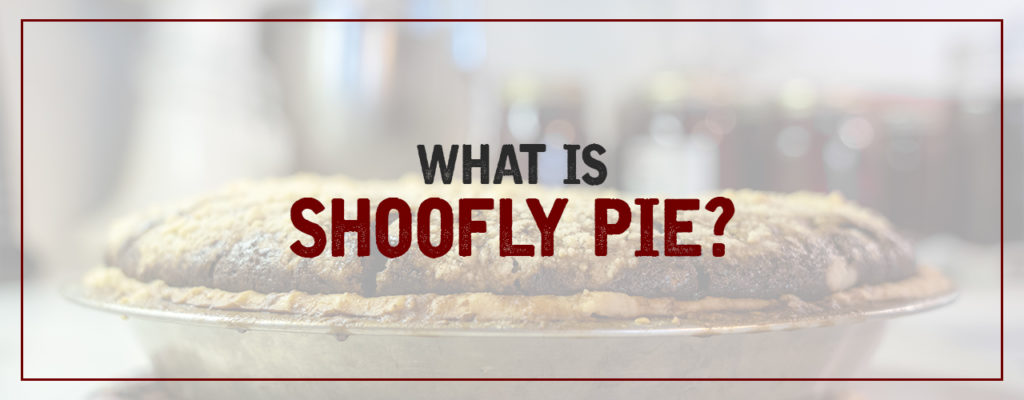
Shoofly pie, also written as shoo fly pie or shoo-fly pie, is a classic Pennsylvania Dutch pie containing molasses. With a crumbly topping, the pie resembles coffee cake and is a delicious treat for breakfast. You could also have it as a dessert with some ice cream, or top it with whipped cream to enjoy any time of day.
Shoofly pie is a must-try delicacy for visitors to Lancaster County. Whether you’ve never tried this dessert or it’s one of your favorites, read on to learn more about this delicious pie and its fascinating history.
 What Is Shoofly Pie Made Of?
What Is Shoofly Pie Made Of?
As with any beloved food, recipes for shoofly pie abound, and anyone who makes it may include variations on the ingredients and quantities of each. Most recipes, though, stick to these staple ingredients:
- Pie crust: You can find recipes for shoofly cake, which mimic the flavors of a shoofly pie. In fact, shoofly pie is said to have started out as a cake. However, Pennsylvania Dutch shoofly pie is, as the name suggests, contained in a pie shell. This treat is a single-crust pie, meaning only the bottom and not the top of the creation is covered in a layer of crust.
- Molasses: Shoofly pie is essentially a molasses pie. This ingredient is where the pie’s rich, syrupy flavor and texture come from. All recipes should include molasses, though some may also add corn syrup. S. Clyde Weaver’s signature recipe combines barrel molasses and blackstrap dark molasses for a beautifully balanced and rich flavor.
- Hot water: In addition to the molasses, the filling contains hot or boiling water. Some cooks opt for coffee instead of water as it will fulfill the same purpose and add to the pie’s flavor with a bitter taste to contrast the sweetness. The water or coffee thins out the molasses filling mixture, but as it bakes, the filling will take on a gel-like consistency. In dry bottom recipes, the filling will be more like cake.
- Baking soda: Baking soda is a leavening agent that activates when combined with a liquid and something acidic. In this case, the acid in the pie comes from the molasses. The pH of cane molasses is typically between 5 and 7. The baking soda helps balance the pH of the pie mixture, which is especially important when using stronger, more bitter varieties of molasses.
- Egg: Old-fashioned shoofly pie recipes did not originally include any eggs. A lack of this ingredient shows this treat was a winter pie recipe. Hens tend to lay far fewer eggs in the winter, and Pennsylvania Dutch women needed a pie recipe using the shelf-stable ingredients they had on hand. However, recipes today generally include egg, which gives the pie a richer, more custard-like filling.
- Flour mixture: The crumbly, cake-like quality of shoofly pie comes from the dry mix of flour and sugar with cold butter cut in. Some recipes include spices, as well, such as cinnamon and nutmeg. In dry bottom recipes, the flour mixture is layered throughout, while in wet bottom pies, this mixture is sprinkled entirely on the top.
Dry Bottom vs. Wet Bottom Varieties of Shoofly Pie
There are two main versions of shoofly pie, both of which you can find in Pennsylvania Dutch country — dry bottom and wet bottom. The ingredients in these pies are essentially the same. The difference is in the ratios of wet and dry ingredients and their assembly before baking, which changes the texture of the finished product.
Dry Bottom Shoofly Pie
The dry bottom variety is likely the oldest version of shoofly pie since it is more akin to the cake that was this treat’s predecessor. Despite its history, this version is less popular today. Dry bottom shoofly pie is very cake-like but is still technically considered a pie because it’s contained in a crust.
Dry bottom pies are cakier or breadier than wet bottom pies. This variety has a drier texture because the flour mixture is either mixed in or layered throughout the moist filling rather than saved only for the top. Dry bottom pie is dense and solid enough that you could cut a piece and eat it as a finger food. You could even dip a slice into a cup of coffee.
Wet Bottom Shoofly Pie
The wet bottom version of shoofly pie is the more popular variety, especially in Lancaster County, and it’s what you’ll find in the S. Clyde Weaver bakery. This version of the pie separates the wet and dry ingredients to create more variety in texture and a more pie-like quality. The bottom layer of the pie filling is the wet molasses mixture, which is gooey and custard-like, somewhat like the filling in a pecan or chess pie.
After filling the pie with this wet mixture, the baker sprinkles on the dry crumb mixture of flour, butter, sugar and spices. Some versions may be made with a thin layer of crumbs, while others may feature a thick layer, making the top portion of the pie cakier. The very best wet bottom shoofly pies will transition from delicious gooey filling to a more cake-like consistency to the golden crumbly top.
What Is Molasses?
Molasses is the central ingredient in shoofly pie, and while you can certainly still find molasses on grocery store shelves today, it’s not as popular as it once was. Many people are only vaguely familiar with molasses and what it actually is. Also known as black treacle in British English, molasses is a thick, syrupy product with a slightly sweet flavor.
You’ve probably tasted molasses in holiday favorites like gingerbread, even if you’ve never eaten it straight from the jar. You might also recognize molasses as the ingredient responsible for brown sugar’s color and flavor.
Molasses is a byproduct of the sugar-making process. When sugar makers crush sugarcane or sugar beets and extract the juice, they boil the liquid. As it boils, sugar crystals form. After removing the crystals, the condensed liquid left behind is molasses.
The first batch of molasses is light molasses. This variety is still rich but has a milder and sweeter flavor than others since it still contains a fair amount of sugar. To create a more robust molasses, manufacturers would repeat this same boiling process. With each boiling cycle, the resulting molasses will be darker, thicker, less sweet and more intense in flavor.
The most pungent type of molasses is blackstrap molasses, which comes from boiling the sugar syrup at least three times. This molasses is rich in minerals and has a strong taste that can verge on bitter. It’s best used sparingly or, as in the case of our signature shoofly pie, combined with a more mild variety of molasses so it won’t be overpowering.
The History of Shoofly Pie
Most historians agree that shoofly pie evolved from a cake — but not just any cake. Shoofly pie’s predecessor was a special cake created to commemorate the centennial of the signing of the Declaration of Independence. To mark the occasion, Philadelphia hosted a “Great Exhibition,” the first World’s Fair in the U.S., which nearly 9 million people attended.
The cake quickly made its way to the Pennsylvania Dutch — communities of German and Swiss immigrants and their descendants — where they modified the recipe. The addition of a crust made the cake-pie hybrid easier for eating. The Pennsylvania Dutch popularized shoofly pie, and the dish remains a hallmark of Pennsylvania Dutch cuisine even today.
It’s no wonder that molasses pie became popular among these rural communities since it uses non-perishable, affordable ingredients they had access to. Shoofly pie was especially prized as a winter pie since it didn’t require eggs or other perishable, seasonal ingredients and because molasses kept well throughout the winter.
Molasses used to be the most popular sweetener in the U.S. because it was far more affordable than granulated sugar. That remained the case until after World War I, when the price of granulated sugar had lowered considerably and people were purchasing it in much greater quantities. Today, molasses is more costly than sugar and is less common in modern recipes, but shoofly pie remains a popular treat in Pennsylvania, especially in Lancaster County.
 Why Is It Called Shoofly Pie?
Why Is It Called Shoofly Pie?
Most people who learn about shoofly pie can’t help but wonder how it got its name. After all, you might assume the pie would be named after the centennial cake it evolved from. Where did the term shoofly or “shoo fly” come in? The explanation you’ll often hear is that the sticky, sweet molasses would likely attract flies as the pie was sitting out to cool. You would have to shoo these flies away so they wouldn’t land on and stick to the pie.
This explanation may seem like a convincing shoofly pie meaning at first, but consider that this treat was traditionally enjoyed in winter, when houseflies were nowhere to be found. Still, it’s possible that the pie’s name is a reference to the way it may attract flies.
The more likely explanation, which food historian William Woys Weaver supports, is that shoofly pie was named after a brand of molasses cooks would have been familiar with in the 19th century. You still may wonder how the molasses got the name Shoofly, and the answer to that is clear.
Shoofly molasses, along with other products like Shoofly flour and Shoofly horse powder, were named after a circus mule that toured southeastern Pennsylvania in the late nineteenth century. Shoofly the Boxing Mule was trained to stand upright and donned boxing gloves on his front hooves. They pitted him against a horse, and audiences were amused by the talented performer.
The question remains, though — where did Shoofly the mule get his name? The name undoubtedly came from the folk song “Shoo Fly, Don’t Bother Me,” which was written during the Civil War and was popular throughout the remainder of the nineteenth century. Though only the chorus has endured, a verse in the original lyrics mentions “the angels pouring ‘lasses down.” ‘Lasses, of course, is short for molasses, which seems to bring this pie’s etymology full-circle.
What Is the Best Way to Serve Shoofly Pie?
Shoofly pie is a delicious treat any time of day, any season of the year. That said, this pie is an ideal treat in the fall and winter because of the warmth and depth of flavor from the molasses and spices. Consider serving shoofly pie at your Thanksgiving or holiday dinner, for instance. Offer it instead of or alongside the traditional desserts you may be used to, such as pumpkin or pecan pie. Your guests will enjoy trying something different that still has a quintessential holiday feel.
Another great time to serve shoofly pie is in the morning or afternoon with a cup of coffee or tea. The combination of hot, aromatic coffee and sticky, crumbly shoofly pie is delicious any time of year. You may not be used to serving pie for breakfast, but shoofly pie is more akin to coffee cake than most other pies, so it’s a lovely choice for breakfast, as well as other meals.
Especially if you’re serving shoofly pie as a dessert, consider serving it with a scoop of vanilla ice cream or a dollop of whipped cream, maybe even both! Because the pie is rich and flavorful, these creamy additions help to lighten it up. You can eat shoofly pie at room temperature, but you may prefer it warmed up.
Early versions of shoofly pie were made to be eaten with no utensils. But if you bake or purchase a gooey wet bottom shoofly pie, provide your guests with eating utensils — especially if the pie is topped with ice cream or whipped cream.
Deliciously Indulgent Shoofly Pie and Other Pennsylvania Dutch Delicacies From S. Clyde Weaver
Want to try shoofly pie for the first time? Craving that nostalgic molasses taste? Get yours from the heart of Pennsylvania Dutch country — no matter where you live in the United States. S. Clyde Weaver is known for creating delicious Lancaster County favorites like sweet bologna, scrapple, shoofly pie and much more in our smokehouse and kitchen.
Our shoofly pie is as authentic as you can find. Our recipe achieves the perfect balance, combining the warm, sweet flavor of thick molasses with a moist cake layer and a crumbly top. Every pie is prepared and baked to a beautiful golden finish in our bakery. When you order from our online store, you can have shoofly pie shipped straight from S. Clyde Weaver to your home.
While you’re at it, try some of our famous smoked meats and cheeses. All our products are made using quality ingredients and traditional recipes that have been passed down and refined over a century. When you try products from S. Clyde Weaver, you’ll understand why Pennsylvania Dutch cuisine has a reputation for being some of the country’s very best comfort food.
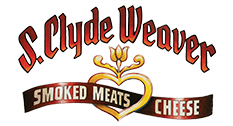





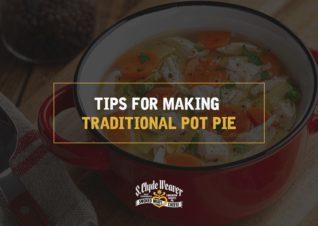
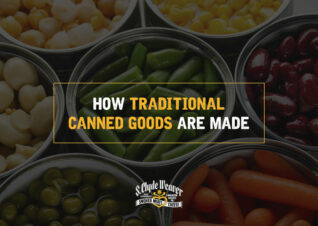
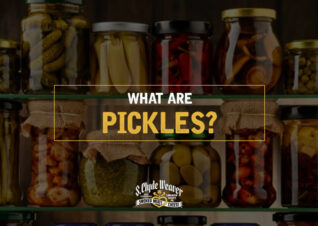



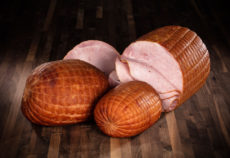

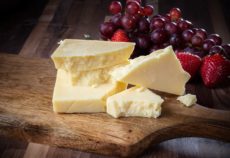
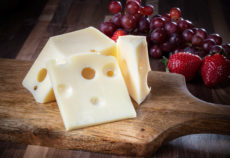
This sounds good, but can we cut back on some sugar
, I do like blackstrap and regular molasses. Where can I find a recipe for real shoofly pie ?